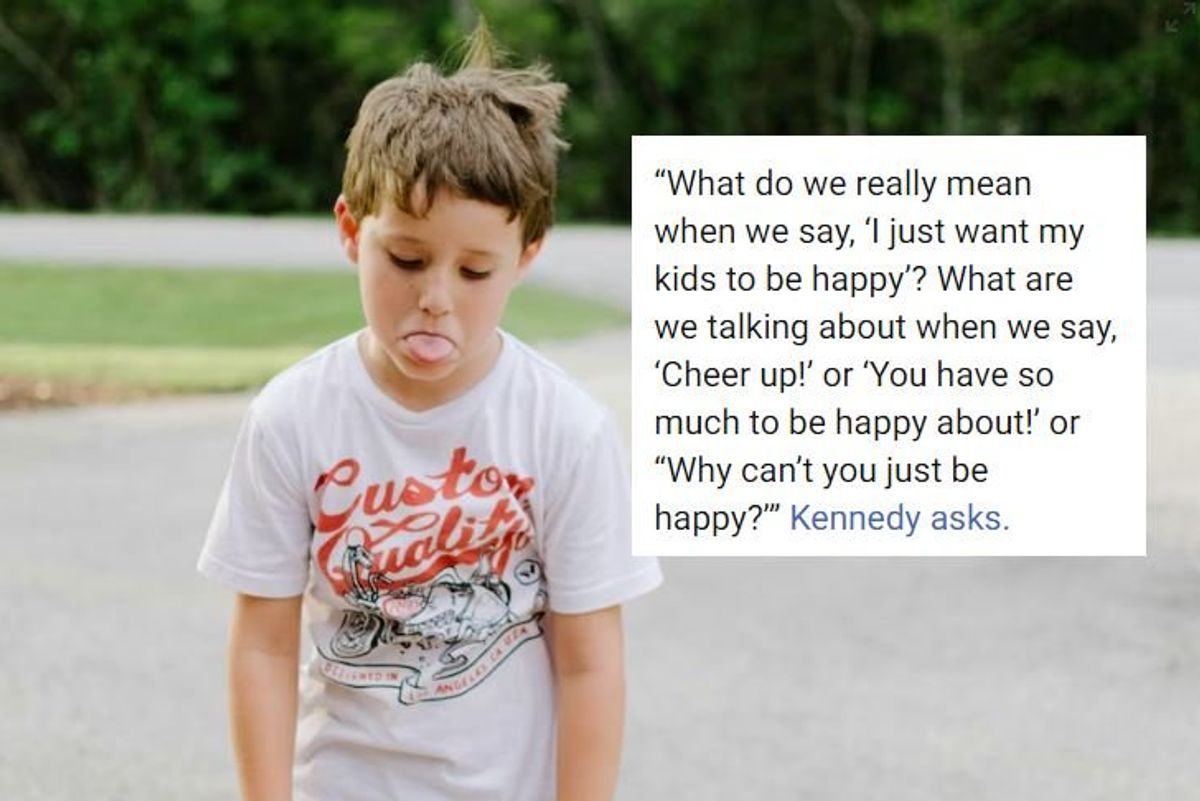'Parenting Whisperer' shares why it's better to teach kids resiliency than to focus on happiness
Resilience is a powerful skill.

He looks dejected, but he'll pull through.
A passage from a new book by Dr. Becky Kennedy makes a strong case for parents to focus more on raising resilient kids than happy ones. The excerpt from “GOOD INSIDE: A Guide to Becoming the Parent You Want to Be” by Dr. Kennedy was published by Big Think.
Dr. Kennedy is a clinical psychologist, bestselling author and mom of three named "The Millennial Parenting Whisperer" by TIME magazine.
Everyone wants their children to be happy, but Dr. Kennedy argues that the path to that ultimate goal lies in addressing the root cause of unhappiness. When a child doesn't have the skills to cope with everyday feelings such as disappointment, frustration, envy and sadness, it will interfere with their ability to cultivate happiness. However, If we teach children how to regulate their emotional states, they will be able to develop the peace of mind necessary to be happy.
It’s like the old adage says: “Give a man a fish, and he’ll eat for a day. Teach him to fish, and he’ll eat forever.”
“What do we really mean when we say, ‘I just want my kids to be happy’? What are we talking about when we say, ‘Cheer up!’ or ‘You have so much to be happy about!’ or “Why can’t you just be happy?’” Kennedy asks.
Confidence comes from knowing how you feel, feeling at home with yourself, and being compassionate and curious about your internal experience.
— Good Inside (@GoodInside) September 27, 2022
The more we help our kids learn that they are okay how they are, the more internal strength they have to change - when they’re ready. pic.twitter.com/HNhyAVTpBZ
“I, for one, don’t think we’re talking about cultivating happiness as much as we’re talking about avoiding fear and distress,” Kennedy continues. “Because when we focus on happiness, we ignore all the other emotions that will inevitably come up throughout our kids’ lives, which means we aren’t teaching them how to cope with those emotions.”
Kennedy believes that focusing on happiness instead of the underlying conditions that create it is like putting a bandaid over the problem.
“For me, happiness is much less compelling than resilience,” Kennedy writes. “After all, cultivating happiness is dependent on regulating distress. We have to feel safe before we can feel happy. Why do we have to learn to regulate the tough stuff first? Why can’t happiness just ‘win’ and ‘beat’ all other emotions? That certainly would be easier!”
So how does one raise an emotionally resilient child?
Kenneth Barish, Ph.D., Clinical Professor of Psychology at Weill Cornell Medical College, told PBS that parents build their child’s resilience by having a 10-minute discussion with them every night at bedtime.
“In these brief daily conversations, we should ask kids if there is something they might want to talk about—perhaps a problem at school or with friends, something they are angry with us about, or what they may be anxious about the following day,” Barish writes.
“Parents should listen to the child’s recount of the day without judgment and let them know that they have had the same experiences, too. “We can say, for example, ‘Yes, I know, it feels really bad when other kids won’t let you play…I also felt bad and angry when those kinds of things happened to me.’ Many children will respond to these statements with astonishment,” Barish writes.
This parent-child discussion can help children put their disappointments in perspective and learn that everyone has struggles. The key is developing the skills to overcome them.
“Resilience is not a static character trait that children possess or lack; it’s a skill that can be cultivated, and one that, hopefully, parents help instill in their kids from a young age,” Kennedy writes. “Because we can’t always change the stressors around us, but we can always work on our ability to access resilience.”
- Developmental scientist shared her 'anti-parenting advice' and parents are relieved ›
- A doctor specializing in child development shares 5 of her most surprising parenting tips ›
- Pediatrician is changing the way we think about teens with 'lighthouse parenting' tips ›
- There is one group of people that might be happier single than they are in a relationship - Upworthy ›
- Psychologist shares 3 things you can say to a 'rude' kid to stop the attitude - Upworthy ›
- Dad shares 3 brilliant principles for fathers on how to teach sons to respond to setbacks - Upworthy ›
- Dr. Becky Kenny on how to beat frustration when learning something new - Upworthy ›
- Dr. Becky unveils a simple hack for parents to avoid a 'breakfast battle' every morning - Upworthy ›
- Studies show non-parents are happier than parents unless 1 of these 3 things are true - Upworthy ›

